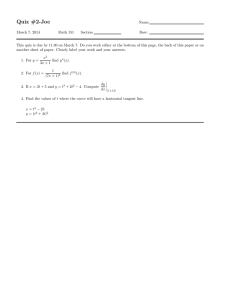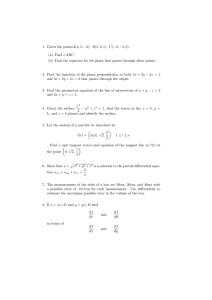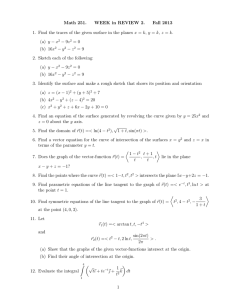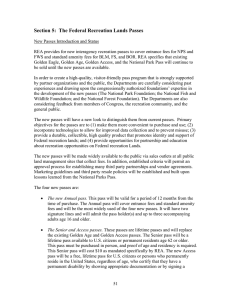Lecture 3, September 28 • ⟨v ⟩
advertisement
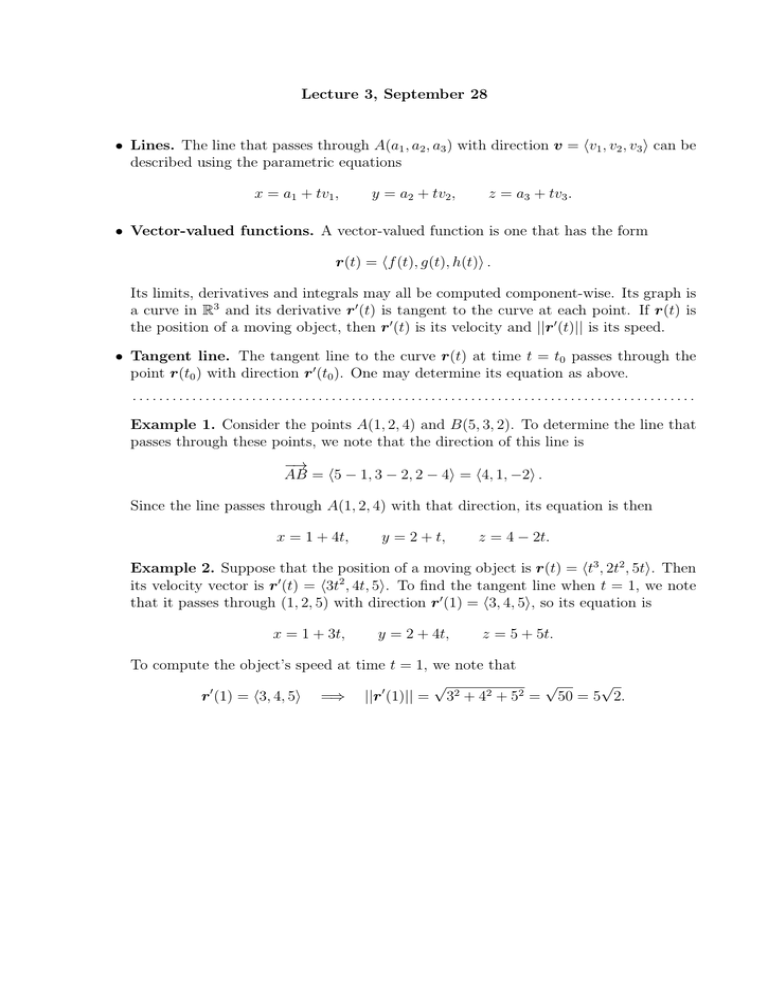
Lecture 3, September 28 • Lines. The line that passes through A(a1 , a2 , a3 ) with direction v = ⟨v1 , v2 , v3 ⟩ can be described using the parametric equations x = a1 + tv1 , y = a2 + tv2 , z = a3 + tv3 . • Vector-valued functions. A vector-valued function is one that has the form r(t) = ⟨f (t), g(t), h(t)⟩ . Its limits, derivatives and integrals may all be computed component-wise. Its graph is a curve in R3 and its derivative r ′ (t) is tangent to the curve at each point. If r(t) is the position of a moving object, then r ′ (t) is its velocity and ||r ′ (t)|| is its speed. • Tangent line. The tangent line to the curve r(t) at time t = t0 passes through the point r(t0 ) with direction r ′ (t0 ). One may determine its equation as above. ..................................................................................... Example 1. Consider the points A(1, 2, 4) and B(5, 3, 2). To determine the line that passes through these points, we note that the direction of this line is −→ AB = ⟨5 − 1, 3 − 2, 2 − 4⟩ = ⟨4, 1, −2⟩ . Since the line passes through A(1, 2, 4) with that direction, its equation is then x = 1 + 4t, y = 2 + t, z = 4 − 2t. Example 2. Suppose that the position of a moving object is r(t) = ⟨t3 , 2t2 , 5t⟩. Then its velocity vector is r ′ (t) = ⟨3t2 , 4t, 5⟩. To find the tangent line when t = 1, we note that it passes through (1, 2, 5) with direction r ′ (1) = ⟨3, 4, 5⟩, so its equation is x = 1 + 3t, y = 2 + 4t, z = 5 + 5t. To compute the object’s speed at time t = 1, we note that √ √ √ r ′ (1) = ⟨3, 4, 5⟩ =⇒ ||r ′ (1)|| = 32 + 42 + 52 = 50 = 5 2.
